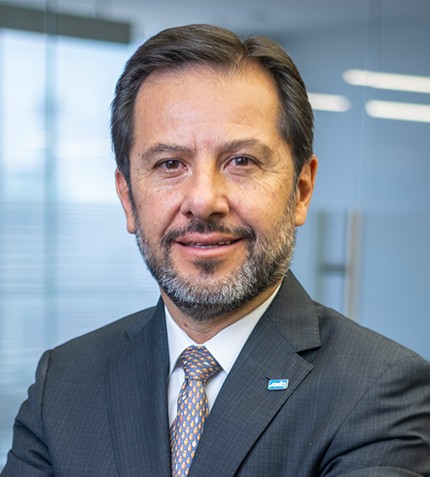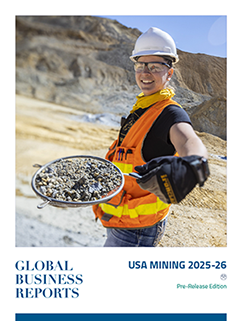
"Chile’s mining landscape is evolving, with many of its century-old mines transitioning to underground operations. This shift aligns with Master Drilling’s long-term strategy to expand its market presence."
RELATED PUBLICATION
Fernando Vivanco
GENERAL MANAGER, MASTER DRILLING
Could you provide an overview of Master Drilling's work in Chile during 2024?
2024 was a strong year for both the group and our operations in Chile. One significant project was our contract at Chuquicamata Underground, where we work in consortium with Besalco. We completed the first contract and have since been awarded a second. Additionally, we expanded our business by acquiring a majority stake in Konec, a Chilean technology company specializing in innovative solutions. This acquisition is part of our strategy to integrate advanced technology into our operations. We are also advancing in mechanical cutting technology, particularly with the Mobile Tunnel Borer (MTB) machine designed and manufactured to operate in underground mining.
How has Master Drilling's approach to projects in Chile evolved?
We implemented a major shift in mechanization around 20–25 years ago, making vertical developments fully mechanized and remote-controlled. We now see a similar transition happening in horizontal mining developments. Our focus is on improving efficiency, safety, and sustainability. The recent acquisition of Konec aligns with this vision, as the company specializes in collision avoidance and anti-runover systems using AI.
How does Chile compare to other countries in the mining sector, and what steps should it take to maintain its leadership in copper and lithium production?
While Chile remains the top copper producer, its global share has declined from 35% historically to around 25%. To maintain its leadership, Chile must focus on streamlining its permitting process, as excessive delays discourage investment. Regulatory certainty is also crucial, as inconsistent government decisions create uncertainty for investors. Additionally, embracing technological advancements is essential for increasing efficiency and sustainability in the sector. Workforce training should be a priority, as there is a growing need for skilled labor, particularly in technical fields. Finally, Chile must ensure its tax policies remain competitive, as other mining nations like Canada and Peru are lowering taxes to attract investment.
How does Master Drilling adapt its solutions to the net-zero challenges of Chilean mining companies?
The company actively monitors key environmental indicators such as water and oil usage, as well as its carbon footprint, in both Chile and other countries where it operates. It also prioritizes social responsibility, promoting greater inclusion of women in the workforce and adhering to strong governance practices. Master Drilling understands that sustainability is not optional but essential for long-term success, particularly in mining, where projects are long-term, and strong client relationships are built on trust.
Can you explain the challenges and benefits of introducing new technologies like the MTB machine?
The main challenge is the high initial investment and the learning curve associated with adopting new machinery. Productivity may initially be lower as workers adapt to the technology. However, the long-term benefits far outweigh these challenges. Our MTBs enable continuous mining operations, unlike traditional methods that require stopping for blasting, ventilation, and material removal. This results in increased efficiency, higher safety standards, and reduced overall costs over time. Additionally, our MTBs can be adapted to different rock conditions, making them a versatile solution for modern mining needs.
What are Master Drilling's plans and objectives for 2025 and beyond, both globally and in Chile?
Since 2016, the company has significantly increased its sales, and by 2028, it aims to double its current revenues. Achieving this goal is not merely about increasing sales but also about diversifying services and solutions in the mining sector. A key focus is bringing cutting-edge solutions, such as the first MTB, to Chile’s mining industry. The success of such initiatives could open new market opportunities and solidify the company’s leadership in advanced mining solutions. Master Drilling expects 2025 to be a better year than 2024, driven by new projects, expanded markets, and the introduction of innovative products and services.
Chile’s mining landscape is evolving, with many of its century-old mines transitioning to underground operations. This shift aligns with Master Drilling’s long-term strategy to expand its market presence. The industry’s move toward underground mining is driven by sustainability concerns, as these projects have a lower environmental impact despite their higher initial costs. The company has closely followed projects like Chuquicamata Underground and is monitoring future underground expansions at mines such as Los Bronces and Escondida. Additionally, new greenfield projects are increasingly being designed as underground mines, reinforcing the demand for specialized drilling solutions.











